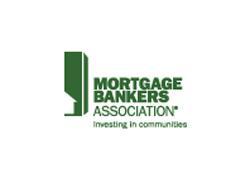Homeownership Back to Historical Level
Washington, DC, July 15, 2011 -- The drop in the homeownership rate from an all-time high of 69.2% in 2004 to 66.4% in the first quarter of 2011 reflects a decline from unsustainable levels to something closer to historical averages, according to a study released today by the Mortgage Bankers Association Research Institute for Housing America.
While the homeownership rate may have bottomed out, it could fall another one or two%age points because of tightened credit and other factors, the paper says.
Titled "Homeownership Boom and Bust 2000 to 2009: Where Will the Homeownership Rate Go from Here?," the study was conducted by professors Stuart Gabriel of UCLA's Anderson School and Stuart Rosenthal of Syracuse University.
They found that the increase in the homeownership rate in the middle of the last decade extended to all age groups but was most pronounced among individuals under age 30.
These increases coincided with looser credit conditions that enhanced household access to mortgage credit, along with less risk-averse attitudes toward investment in homeownership.
Following the crash, these trends have reversed and homeownership rates have largely reverted to the levels of 2000.
"The question of why homeownership rates are falling now is really a question of why they were so high during the middle of the last decade," said Gabriel.
"From the late 1960s to the mid-1990s, U.S. homeownership rates were relatively stable between 64 and 65%. Our findings suggest that the boom and bust in homeownership rates over the last decade was driven in part by an initial relaxation of credit standards followed by a tightening of credit with the onset of the 2007 financial crash. Evidence also suggests that households headed by people in their 20s and 30s were willing to take more risk with respect to homeownership in the boom years, followed by a return to a more conservative approach after the crash."
"How much more might the homeownership rate fall? The answer depends on uncertain forecasts of attitudes towards homeownership and changes in the credit market and economic conditions," concluded Rosenthal. "If underwriting conditions and attitudes about investing in homeownership settle back to year-2000 patterns and, if the socioeconomic and demographic traits of the population look similar to those of 2000, then the homeownership rate may have bottomed out and will not decline further.
"If, instead, household employment, earnings and other socioeconomic characteristics over the next few years remain similar to those in 2009, then homeownership rates could fall by up to another 1 to 2 percentage points beyond 2011. Those declines are likely to be greatest in cities and regions in which house prices were most volatile in the last decade."
